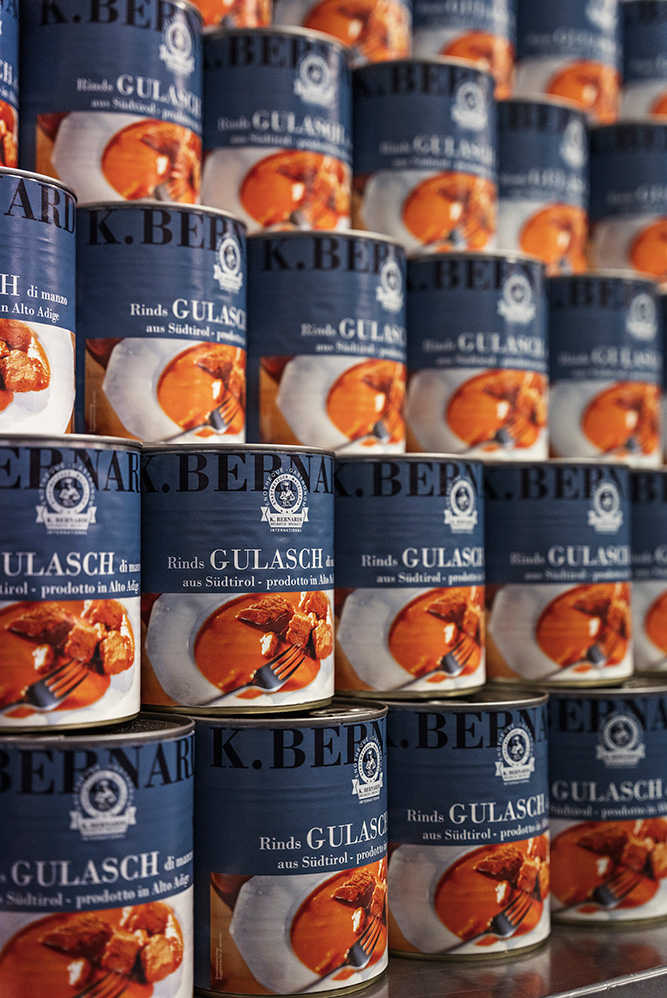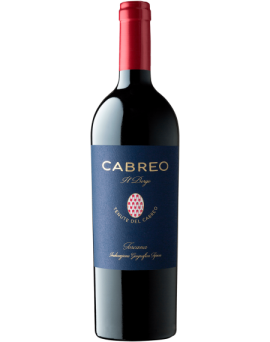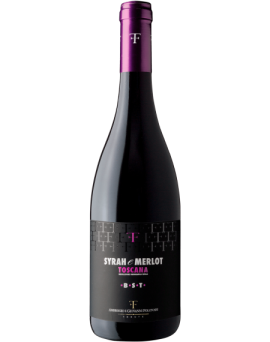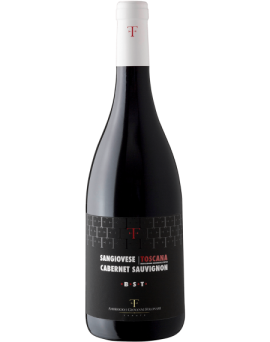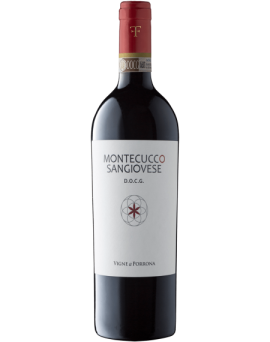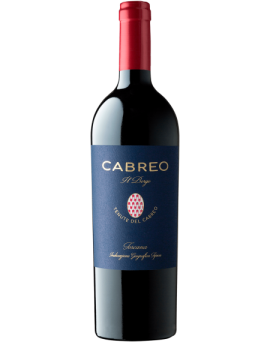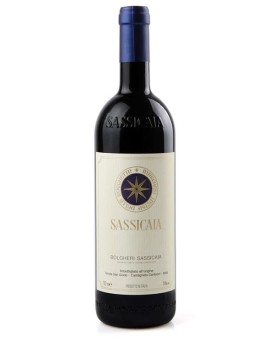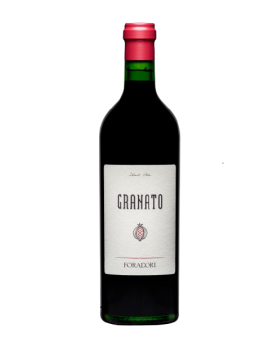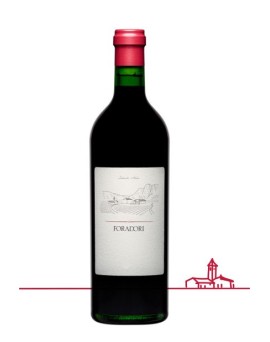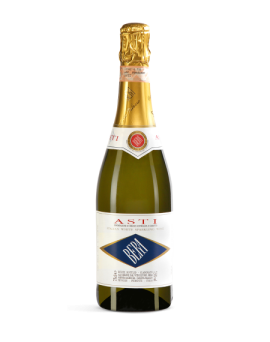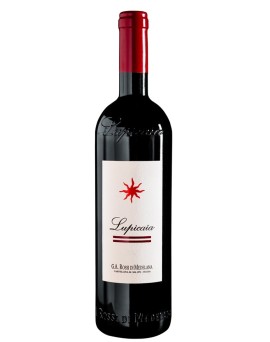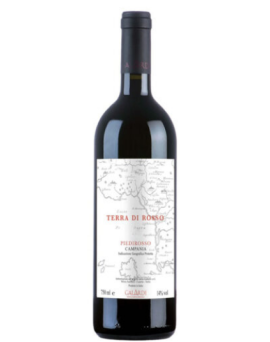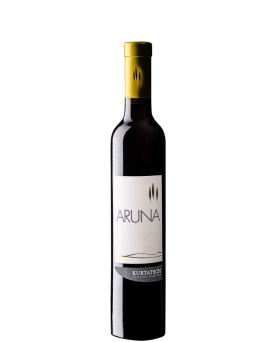Basket
0
Active filters
B.S.T. Baby Super Tuscan...
SANGIOVESE E CABERNET SAUVIGNON 2020<br />Indicazione Geografica Tipica (IGT)<br /><br />THE IDEA<br />They are called BABY SUPER TUSCAN because, unlike their Senior Super Tuscan cousins, they age exclusively in steel vats, a technique that makes these wines<br />pleasant, fresh and ready to drink, characterised by fruity notes and softness of taste.<br /><br />About the wine:<br />The typical blend of Supertuscans of central Tuscany, in the heart of the historical appellations, it shows the freshness of the fruit and the floral notes of Sangiovese and also<br />the strength and structure of Cabernet Sauvignon. The ideal wine to enjoy with friends, it is the everyday perfect pairing.<br /><br />Tasting: The 2020 vintage reveals delicate hints of cherry and orange peel. Pleasant mouthfeel sensations of freshness characterise a firmly structured Baby Super Tuscan<br />with a long finish.<br />Pairing: it goes well with anything that is red in colour, it is the ideal for a happy hour, it is special and surprising paired with Pizza and Mediterranean toppings, cold cuts,<br />finger food and street food<br /><br />First vintage: 2015<br />Serving temperature: from 15 ° C to 18 ° C<br />GRAPES<br />Grape varieties: 55% Sangiovese - 45% Cabernet Sauvignon grapes grown on our estates<br />CELLAR<br />Vinification: the grapes are harvested when they reach a perfect ripeness. Fermentation at a temperature<br />of 28 ° C and maceration on the skins takes place in steel vats,<br />Aging: always in steel vats, it is characterised by very frequent and oxygenating rackings<br />Refinement: in the bottle for at least 2 months<br />
Price
€14.40
Montecucco Sangiovese 750ml...
The Wine<br /><br />A Sangiovese from the Tuscan Maremma within the Montecucco DOCG appellation and aged in French toasted oak barrels. A complex and firmly structured wine thanks to<br />the good pedo-climatic features of Vigne a Porrona that lies on the gentle hills on the slopes of Mount Amiata a few kilometres from the Tyrrhenian Sea.<br />Tasting: The 2019 vintage stands out for its aromas of macerated mixed spring flowers, dried cherry, bark, espresso, ash and spice woody notes. Medium to full-bodied with<br />firm tannins. Mouthfeel sensations of great freshness and pleasantness of taste. Full-flavoured on the finish.<br />Pairing: Villa di Nozzole suggest pairing it with ravioli filled with wild boar and cinnamon and roast and parmesan sauce.<br />First vintage: 2008<br /><br /><br />The Field<br /><br />Production Area: made from grapes grown in the vineyards of Tenuta di Vigne in Porrona in the municipality of Cinigiano, province of Grosseto, 2 km south/east of<br />Montalcino<br />Altitude: 350 MSL<br /><br /><br />The Grapes<br /><br />Grape variety: Sangiovese<br />Planting pattern: 5,500 - 6,000 plants per hectare<br />Production per hectare: on average 7 tons of grapes<br />Grape yield: about 70%<br /><br /><br />In the winery<br /><br />Vinification: fermentation with maceration on the skins for about 25 days in stainless steel vats at a controlled temperature<br />Aging:in 500-litres tonneaux<br />
Price
€15.80
Cabreo 'Il Borgo' 2020 750ml
The Wine<br /><br />For over five years, Cabreo has expressed the perfect harmony between tradition, innovation and suitability for the territory in which it is born: Greve in Chianti. This wine is<br />the result of a careful blend of Merlot, Cabernet Sauvignon and Sangiovese, which respectively give softness, strength and elegance, and of a long aging in small French oak<br />barrels.<br />Vintage: The 2020 vintage is purple red, crystalline and bright, on the nose it presents a synergistic sensorial profile between the descriptors of wood and those of cabernet.<br />Partially tamed by the softness of the merlot. In the mouth it expresses the young maturity of a great red, alternating pleasant tannic sensations with sweet vinous<br />sensations. Nose and mouth constantly evolving in the glass. Descriptors: cherry, coconut, chocolate, vanilla and final tobacco and infusions.<br />Pairing: it goes perfectly with all meat dishes, great cheeses, or just enjoyed with friends.<br />First vintage: 1982<br />Shelf life: up to 20-30 years<br />Curiosity: The word Cabreo, as per authentic Tuscan tradition, indicates maps of the estates owned by the great Florentine families<br /><br /><br />The Field<br /><br />Production Area: wine made from grapes grown on vineyards of Tenute del Cabreo located in the<br />hills of Greve in Chianti<br />Altitude: about 300 MSL<br /><br /><br />The Grapes<br /><br />Grape varieties: Cabernet Sauvignon, Merlot and Sangiovese<br />Planting pattern: 3,000 - 5,000 plants per hectare<br />Production per hectare: on average 7 tons of grapes<br />Grape yield: about 65%<br /><br />In the winery<br /><br />Vinification: in stainless steel vats at a controlled temperature of 28 ° C. Maceration on the skins for 18 days<br />Aging: in 225lt French oak barriques, of which 30% new, 40% one year old, 30% two years old, for 18 months<br />Refinement: in the bottle for at least 6 months<br />
Price
€44.00
Teroldego Granato 2021...
<br />Granato<br /><br />Grapevines and pomegranates share a common origin and often go together in the Mediterranean basin. The fruit of the pomegranate also possesses the charm, beauty and<br />intensity of the fruit of the vine.<br /><br />It is from this ideal combination that the name 'Granato' is inspired, the name of a Teroldego of particular concentration and density that has its roots in the stones of three<br />vineyards in the Campo Rotaliano.<br /><br />Appellation: Granato - Teroldego Vigneti delle Dolomiti IGT<br />Variety: Teroldego<br />Vineyard location: old pergolas belonging to the Foradori winery located in Mezzolombardo, in the heart of the Campo Rotaliano area.<br />Surface area of the vineyards: three different plots for a total of 4 hectares.<br />Soil: alluvial, gravelly-pebbly soil<br />Fermentation: in large open vats<br />Aging: 15 months in barrels<br />Annual production: 20,000 bottles<br />
Price
€68.60
Teroldego 2022 FORADORI 0,75 l
<br />Foradori<br /><br />The Campo Rotaliano is a well-demarcated geographical area, a sort of indentation of the<br />Valle dell'Adige, wedged between the mountains.<br />Its history and formation are linked to the Noce River, which for centuries has carried limestone, granite and porphyritic debris. Within this small plain, depending on the<br />basic soil content, it is possible to differentiate micro zones that have been given different names by the winemakers.<br />It is through gathering together the grapes of some of these micro zones, characterized by predominantly sandy soils and with different quality requirements that the<br />Foradori is born.<br /><br />Name of wine: Foradori - Teroldego Vigneti delle Dolomiti IGT<br />Grape: Teroldego<br />Vineyard location: pergola and guyot vines in Mezzolombardo - Campo Rotaliano<br />Hectares: 9 hectares across various plots<br />Terroir: Alluvial, gravel and sand<br />Fermentation and fining: Cement tanks, 12 months in barrel and cement<br />Annual production: 50.000 bottles<br />
Price
€22.00
Spumante D'Asti BERA 2023...
The grapes used to produce this finely aromatic Asti spumante come from Moscato bianco vineyards on soil rich in limestone. The continuous 'perlage' and persistent foam<br />are a prelude to the ample and intense perfume reminiscent of orange blossom and sage. The sweet and inviting flavour is tempered by a stimulating acidity. Ideal with<br />dessert, the wine of the party, as an aperitif and for any other occasion to remember.<br /><br />TECHNICAL DESCRIPTION:<br />Vineyard exposure: east-south to south-west, with rows oriented to take full advantage of the sun's action on leaves and bunches.<br />Soil composition: clayey-tufaceous soil rich in limestone, which enhances the finesse and aromaticity of the wines, very important for this grape variety.<br />Vine density: nr. 4000/5000 vines per hectare from 5 to 40 years.<br />Type of training: low plant with simple guyot, tending to bring the leafy part upwards, in order to expose the bunches to the sun's action and encourage photosynthesis on<br />the leaves. A maximum of 8/9 fruit buds are left.<br />Harvest: 1st or 2nd decade of September, picked by hand.<br /><br />ORGANOLEPTIC DATA SHEET:<br />Denomination: Asti DOCG<br />Grape variety: White Muscat<br />Colour: more or less deep straw yellow colour.<br />Perlage: fine and persistent.<br />Bouquet: rich and intense fragrant aroma of Muscat grapes mixed with the scent of yeast and floral notes.<br />Taste: delicately sweet flavour, in harmony with the right acidity, moderate alcohol content and enlivened by the development of the mousse.<br />Serving suggestions: Serve chilled, 6-8°C on dessert, with various pastries, as an aperitif, as a thirst quencher at any time of day, but especially on any festive occasion.<br />ANALYTICAL DATA SHEET:<br />Alcohol content: 7.0% vol.<br />Sugar: 115, 0 g/l<br />Total acidity: 6,0 g/l<br />
Price
€14.60
Lupicaia 2018 Castello del...
<br /><br />Denomination: I.G.T. Rosso Toscana (Lupicaia)<br />Producer: Gian Annibale Rossi di Medelana,Vittorio Piozzo di<br />Rosignano Rossi di Medelana<br />First vintage: 1993<br />Grapes: Cabernet Sauvignon, Petit Verdot<br />Analytical data: Alcohol degree: 14.50%.<br />Soil type: The soils are rich in iron minerals with the presence of stones and fossils. Facing the Mediterranean Sea, they benefit from a unique reflection of the sun, a<br />moderate breeze from the coast and the abundance of sunlight promotes unique ripening.<br /><br />Training system: Spurred Cordon<br />Planting density: 3,600 vines/Ha for old vineyards; 5,600 vines/Ha for new vineyards<br /><br />Climatic trend: 2016 was certainly one of the most regular vintages of the last decade. Rainfall met the vines' needs punctually: abundant in March, regular in May and June,<br />important at the end of July and, finally, a warm and sunny August and mid-September. Temperatures were optimal: a mild end to the winter that had caused concern was<br />then regularised by a tenably cool spring that slowed down the development of the bunches, which then benefited from the hot but not torrid summer, with significant<br />temperature swings. Cluster growth was regular and optimal, production was good and ripening was perfect.<br /><br />Harvest period: Harvesting was strictly by hand and took place for the Petit Verdot and Cabernet Sauvignon grapes from mid-September. After an initial selection in the<br />vineyard at the time of manual harvesting, the Lupicaia grapes are carefully selected a second time on arrival at the winery on the sorting table.<br /><br />Winemaking notes: After manual selection on the sorting table, the grapes are gently destemmed and pressed, taking care not to break the skin of the berries. Meticulous<br />alcoholic fermentation takes place in our stainless steel open-cap fermenters at a controlled temperature with maceration of the grapes for about 20 days. Daily dèlestages<br />allowed the perfect extraction of the bouquet<br />aromas and the right tannic balance, with an important structure that will allow for long ageing.<br /><br />Ageing: Ageing takes place in new French oak tonneaux for a period of about 22 months followed by further ageing in bottles before release.<br />
Price
€157.80
Südt. Weiss Aruna...
ARUNA<br />Mitterberg White IGT<br />450-550 m a.s.l. east, steep slope<br />Large day/night temperature differences<br />Clay, sand and gravel soils, rich in dolomite<br />Alcohol: 12.50 % vol.<br />Total acidity: 7.0 g/l<br />Residual sugar: 150 g/l<br />Yield per hectare: 20 hl<br />Optimum age for drinking: 2-10 years<br />Bottle size: 0,375 l<br />Method of cultivation: sustainable<br />Grape variety: 70% Gewürztraminer, 30% Goldmuskateller<br />Vinification: Goldmuskateller harvested at ideal ripeness, air-dried in crates, Gewürztraminer harvested in December, followed by 20h cold maceration of both varieties,<br />gentle pressing. Fermentation and ageing for 12 months in used barriques.<br />About the wine: the sweet wine cuvée ARUNA is a unique and distinctive meditation wine. Gewürztraminer is considered one of the most difficult grape varieties in the<br />vineyard - Goldmuskateller only develops its delicate aroma in exceptionally good locations. These demanding wines are united at the highest level in the 'Passito' ARUNA.<br />The overwhelming play of aromas shows mountain apricots, Williams pear, lavender honey and ripe exotic fruits. The Gewürztraminer brings extract sweetness and<br />structure. The Goldmuskateller adds dynamic freshness to the wine. The juicy fruit finish is accompanied by a stimulating, vibrant acid-sugar interplay, making for a<br />wonderfully balanced drinking experience. ARUNA: the seducer.<br /><br />1 kg of grapes produces 0.2 litres of ARUNA.<br />
Price
€38.00

